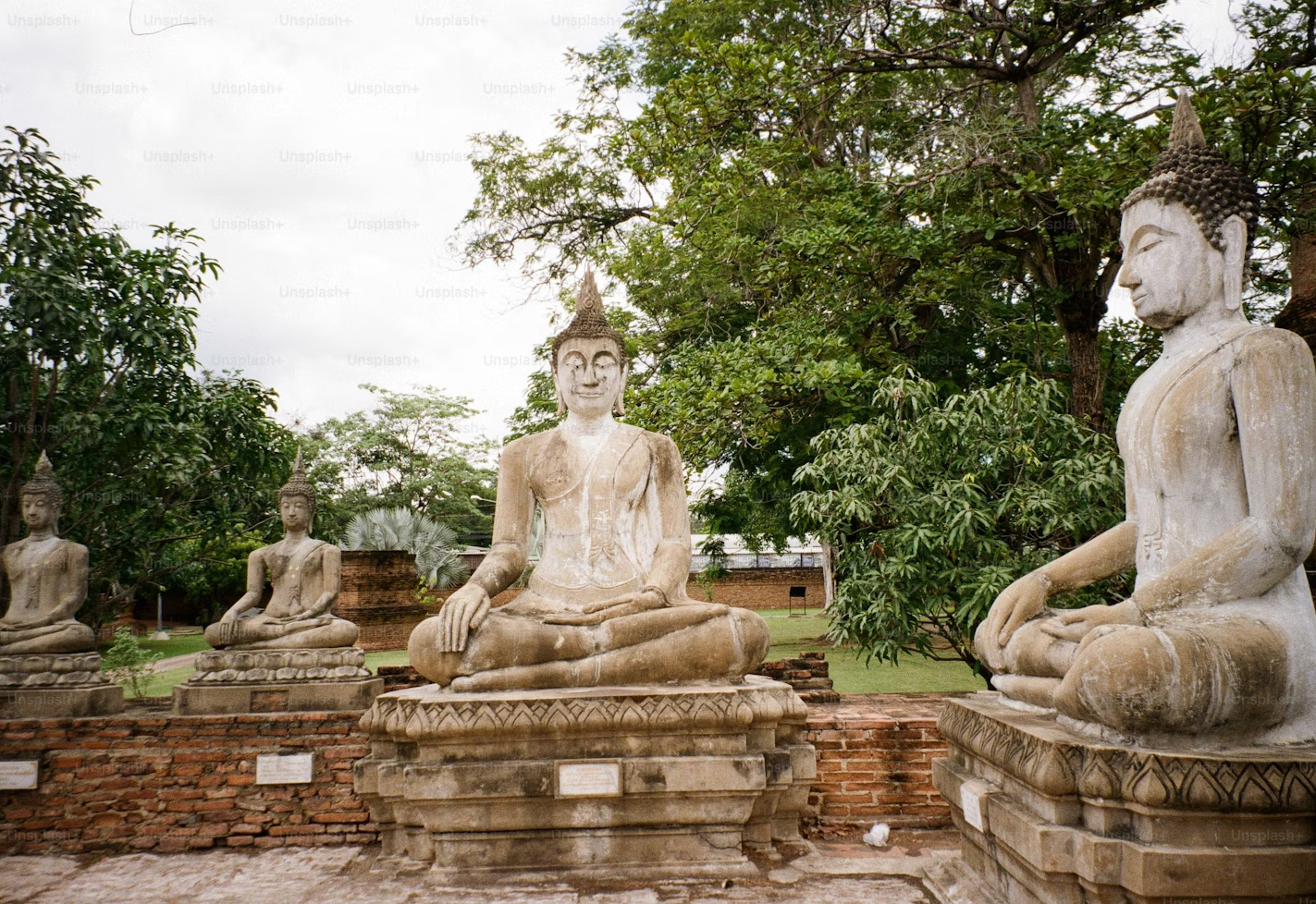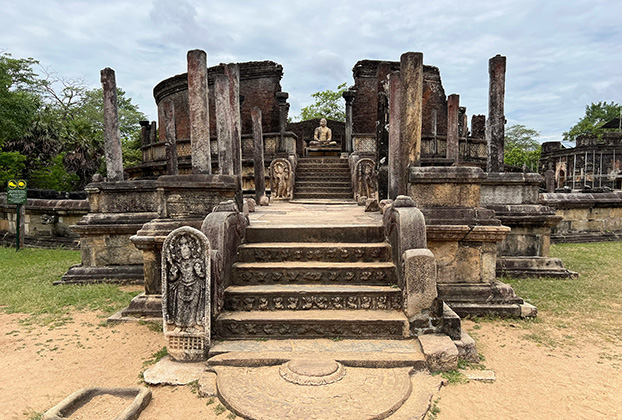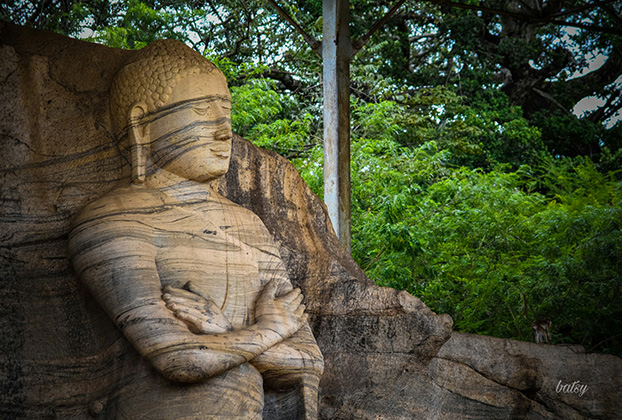
Polonnaruwa
Sri Lanka’s Timeless Medieval Capital
Step back in time at Polonnaruwa, Sri Lanka’s second ancient capital and a UNESCO World Heritage Site. From the 11th to 13th centuries, it thrived as a political, religious, and commercial hub under visionary rulers like King Parakramabahu I.
Here, you’ll find colossal Buddha statues carved from stone, elegant Vatadages, monumental dagobas, and the engineering marvel of Parakrama Samudraya, an ancient reservoir that still irrigates the land today.
Cycling along shaded paths between ruins, you’ll uncover intricately carved moonstones, towering image houses, and palace remnants that whisper stories of royal grandeur. Just outside the city, Minneriya and Kaudulla National Parks offer thrilling wildlife safaris and the seasonal Elephant Gathering.

Top Things to See & Do
Gal Vihara
Four serene Buddha statues carved from a single granite outcrop — a masterpiece of Sinhalese sculpture.
Vatadage
Exquisite circular relic house adorned with moonstones and stone carvings.
Royal Palace
Once seven stories high; massive brick walls still stand as a sign of past glory.
Lankatilaka Vihara
Towering brick image house with a headless standing Buddha.
Parakrama Samudraya
Vast man-made reservoir with stunning sunrise and sunset views.
Nissanka Latha Mandapaya
Unique lotus-stem stone pillars used for royal chanting.
Wildlife Safaris
Seasonal elephant gatherings in nearby Minneriya or Kaudulla.
Getting to Polonnaruwa from Colombo
Train (4–5 hrs): Scenic journey to Polonnaruwa station; book in advance for popular trains.
Bus (5–6 hrs): From Colombo’s Bastian Mawatha to Polonnaruwa; budget-friendly but slower.
Private Transfer (3.5–4 hrs): Fastest and most comfortable via expressways.
Charter Flight: From CMB to Sigiriya Airport, then 1–1.5 hrs by road.
Best Time to Visit
Jan–Apr: Dry, sunny, best for exploring ruins and wildlife safaris.
May–Sep: Brief afternoon showers, lush landscapes, prime elephant gatherings (July–Aug peak).
Oct–Dec: Wettest months, fewer visitors but more rain.
Travel Tips: Start early to beat the heat, carry plenty of water, wear sun protection, and dress modestly for sacred sites.
Local Tips & Insights
Tickets: Buy at the Archaeological Museum near the entrance.
Getting Around: Rent a bicycle or hire a tuk-tuk for the day.
Dress Code: Cover shoulders and knees; remove shoes and hats at sacred sites.
Combine Experiences: Pair your visit with a safari in Minneriya or Kaudulla for a perfect culture-meets-nature day.



